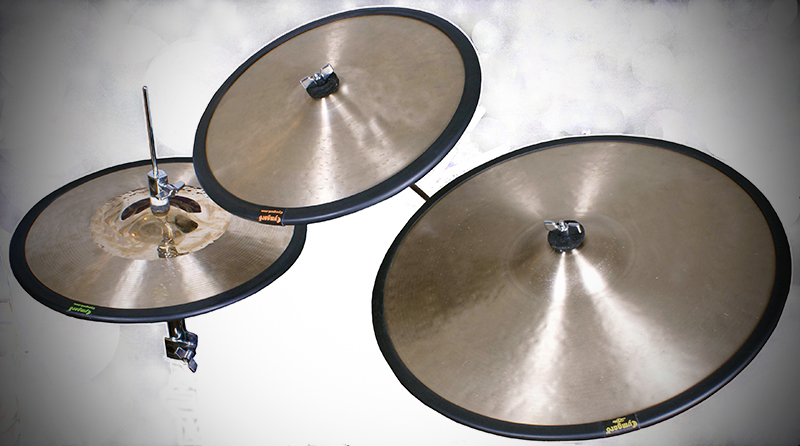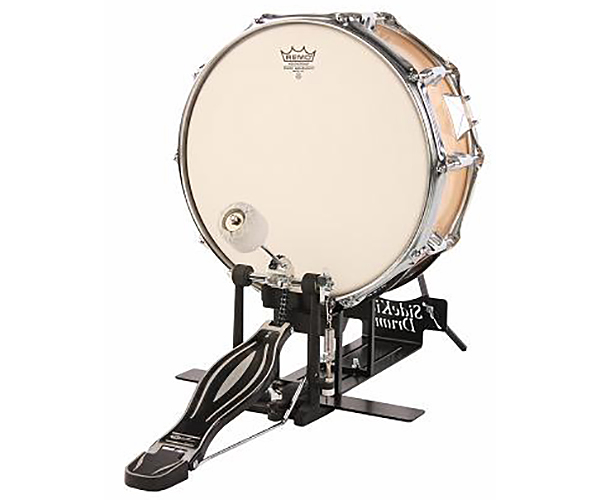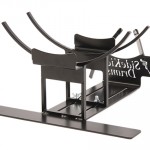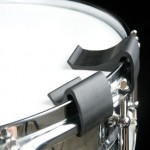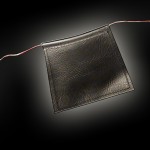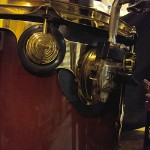Something new! Cymgards are elastic rubber edge protectors and dampeners for cymbals. They have three basic purposes;
- To dampen the sound of the cymbal for quiet practice,
- Cymbal edge protection, and,
- Cushioning for the cymbals in shipment or transit.
They are available in three styles: Cymgard Standard and Cymgard Lite for single cymbals, and Cymgard HiHats for pairs of hi hat cymbals. The Standard is a heavy weight rubber that can absorb heavy impact. They are designed to fit, cushion, and shield the edges of your cymbals from damage due to impact and falling. They are available in sizes from 12” to 24”. The HiHat model is the same weight and will accommodate a pair of hi hat cymbals from 13” to 16”. The Cymgard Lites are, you guessed it, a lighter weight model with a thinner profile that is good for less dampening than the Standard, as well as for protection in transit or storage. They come in sizes from 6” to 24”.
While the Lites go on easy, there is a little bit of a trick to getting the Standards on the cymbals the very first time, but once you learn the simple pull and snap technique, it takes no time at all. The Cymgards will break in and eventually mold to the cymbal over time which is great since there can be as much as a ¼” difference between manufacturers’ sizes. They are made well out of a quality rubber that will stand some abuse and not deteriorate.
Performance:
I tried both the Standard and the Lite versions on a 20” medium ride cymbal and an 18” medium thin crash cymbal. When playing the cymbals with the thicker and stiffer Standard Cymgard, they made the cymbals completely dead as one would expect, BUT the feel of the stick rebound off of the cymbal was about the same as an undampened one – very natural. Crashing with the shank of the stick on the side of the cymbals gave a dead “gonk” sound with no sustain, very similar to the sound and feel of hitting a rubber electronic cymbal pad. Perfect for playing with padded drums or a practice pad set. The Lites were my favorite for practice because they allowed some sustain when riding or crashing, though not really louder. The Standard HiHats are not designed for practice, just storage and cushioning. I also accidentally found a different use that was not described by the manufacturer. I placed a smaller Cymgard Lite loosely on top of the ride cymbal and thought "hmmm....what does that sound like?" it let the cymbal ring even a little more and allowed me to crash the natural edge too.
Protection:
I tried dropping and throwing a couple of old cracked cymbals on the ground. The Standards kept the cymbal edge from bending and cracking. I also tried a stand mounted cymbal, tipping the stand over until the cymbal fell and hit the ground. Same protection; no damage. This could come in handy in those bars or gigs where you have to leave your kit set up where a cymbal might get bumped into.
Cushioning:
I tried storing both the Standards and the Lites in my hard cymbal case and in my soft cymbal bag. The Standards take up more space but I would probably use them if I were going to fly the cymbals in checked baggage. I liked the Lites better for storing in the cymbal bag because they serve as dividers that keep the cymbals from rubbing against each other and don’t take up as much space as the Standards.
The manufacturer has a good video on YouTube that demonstrates all of the applications. My score for Cymgard is a solid ten. They do what they are designed to do and the multi purposes make it worth the investment. I can see no negatives. It's nice to see an innovative product that is designed well, manufactured well, and helps us drummers do what we need to do.
Prices range from $11.95 for the smallest 6” to $28.95 for the largest 24”. This is a product that could pay for itself in the long run as it can possibly save a cymbal from cracking or bending, necessitating a new cymbal purchase. Cymgards are sold at the www.cymgard.com website.

